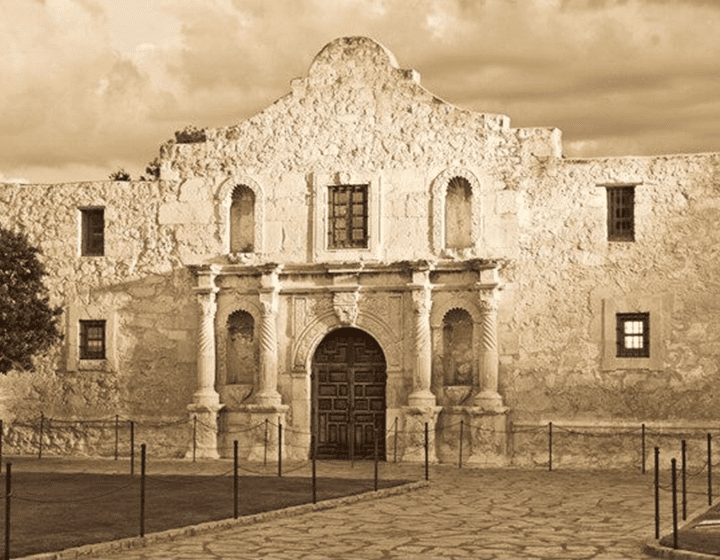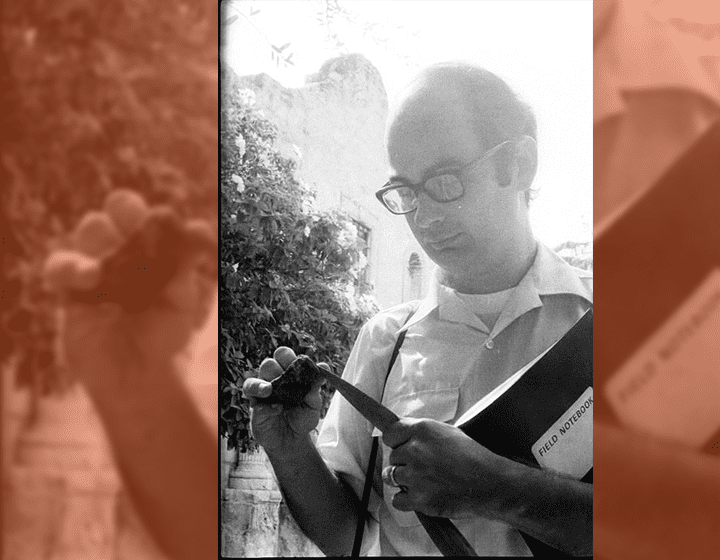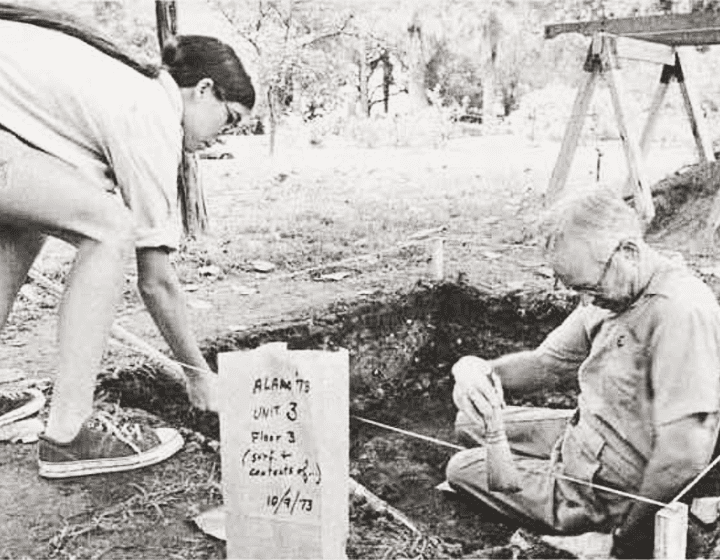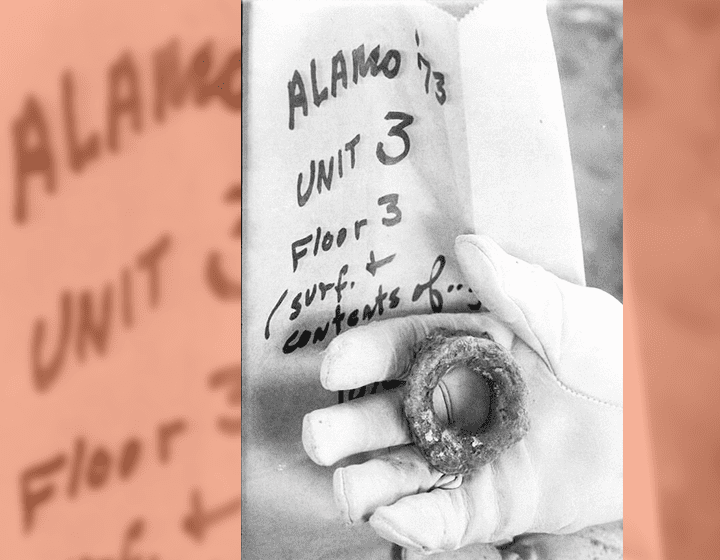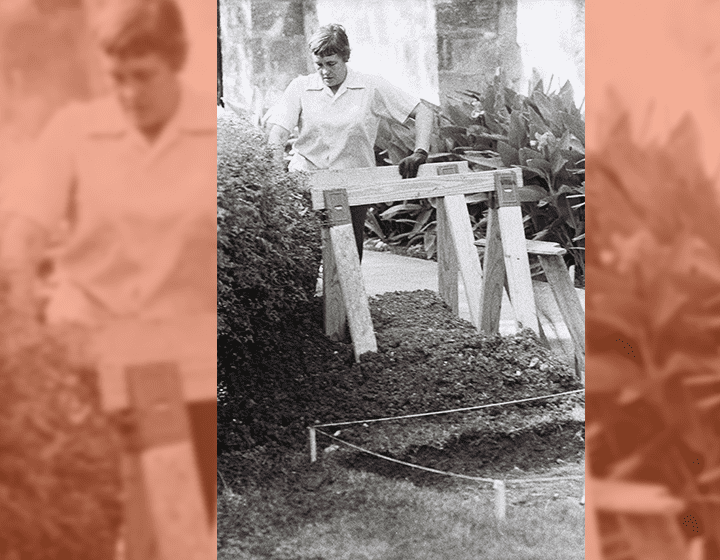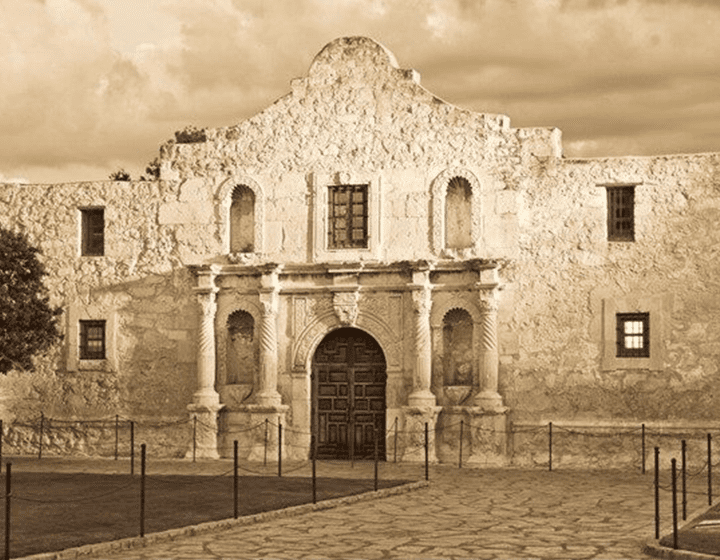
UTSA archaeologists’ first dig and first Alamo excavation took place in October 1973.
Remember the Alamo
UTSA's first archaeological dig sends students in search of relics at the historic shrine
[ This article was originally published in UTSA newsletter The Discourse in October 1975 ]
Sixteen UTSA students are digging at the Alamo for relics from the mission’s colorful, historic past. The students, from two [fall 1973] archaeology classes, hope to determine the route of the acequia, a waterway that carried water from the San Antonio River to the compound during Spanish colonial times. They are also looking for deposits—of broken ceramics, glass, metal, and animal bones from food refuse—that will indicate the lifestyle of the people who lived around the Alamo during that period.
Richard Adams, dean of the College of Humanities and Social Sciences, and Thomas Hester, an assistant professor in the Division of Social Sciences, are coordinating the project.
The Alamo, established as a mission in the early 18th century, has been a Spanish garrison, a fortress during the Texas Revolution, and a U.S. Army depot. During the late 1800s, saloons, a general store, and a wagon yard occupied the structure.
Hester expects the first foot or two of excavation to yield debris from the last hundred years. About three or four feet down he hopes the students will find archaeological deposits from the Spanish colonial period.
UPDATE
The work of the students taking the classes predated the creation of UTSA’s Center for Archaeological Research, which was founded in 1974. Their effort, though, helped inform subsequent maps of acequias used by the City of San Antonio’s Office of Historic Preservation and the long history of CAR’s excavations at the Alamo and across San Antonio and South Texas.



